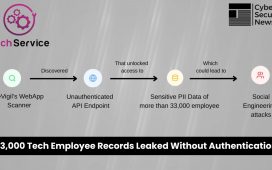“Edge computing is crucial to managing industrial data, because edge moves the compute into the plant itself, allowing for rapid response where the data is generated,” explains Anthony Sayers, a lead solution consultant with Lenovo, in Manufacturing Today. “For example, a manufacturer might move compute into cameras overseeing the production line, robotics or the factory floor, or directly into the Programmable Logic Controllers (PLC) which monitor machines.”
This real-time capability is crucial for high-stakes environments, where delays could lead to significant productivity losses.
2. Manufacturers Will Increase Their Focus on Sustainability
Sustainability has become a central focus for manufacturers, driven by growing regulatory pressures and heightened consumer awareness. As governments prepare to roll out stricter audits and compliance requirements in 2026, manufacturers are dedicating 2025 to enhancing their sustainability practices.
Several U.S. states are introducing regulations that manufacturers must prepare for in 2025. For example, California’s new sustainability mandates require large companies, including manufacturers, to report detailed information on their carbon emissions and climate-related risks. Likewise, the European Union has passed the Corporate Sustainability Reporting Directive, which requires extensive reporting on sustainability from manufacturers and other big companies.
RELATED: The IT solutions and services that can help your manufacturing organization excel.
“We can expect to see a strategic switch towards cleaner and greener operations, such as the use of renewable energy, recyclable materials, reductions in emissions, excessive packaging, and water use,” argues futurist Bernard Marr in Forbes.
Key efforts include reducing energy consumption, minimizing waste and transitioning to renewable energy sources. The adoption of circular-economy principles, which support the reuse and recycling of resources, is gaining traction. Advanced technologies — such as digital twins, which allow for the digital re-creation of real-world things — can help manufacturers simulate and optimize resource usage. And AI is enabling more efficient supply chain management to reduce carbon footprints.
3. Despite the Risks, IT/OT Convergence Will Continue
The integration of information technology and operational technology systems is critical for achieving seamless operations and driving digital transformation. However, many manufacturers struggle with disconnected data and processes due to siloed systems. In 2025, bridging this gap is a top priority.
The benefits of IT/OT integration are significant, including improved efficiency, reduced costs, and enhanced decision-making. But the risks are real: As companies merge their OT systems (which traditionally haven’t been connected to the internet) with IT systems (which are), they create a whole new vector for threat actors to exploit. Last year, the cloud security company Zscaler found that manufacturing firms are “the industry most vulnerable to IoT attacks,” for which it blames “the critical nature of interconnected environments in manufacturing operations, which continue to expand.”
Click the banner below to advance your manufacturing organization’s zero-trust security strategy.









